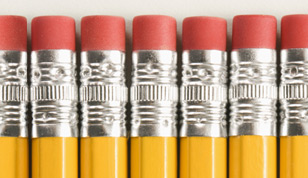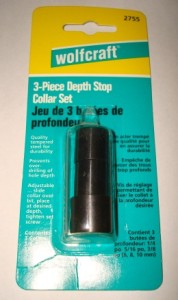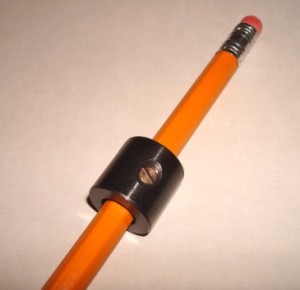Blog Categories
Search Blog
Blog Categories
An Affordable and Accessible Pencil Weight
An Occupational Therapist may have recommended a weighted pencil for your child. Use of a weighted pencil can provide benefits in the following areas:
Pencil Pressure: Children who struggle with limited hand strength often exert little force when they write, resulting in output that appears faint and difficult to read. Added weight on the pencil can provide a better connection between the writing tool and the paper, improving both pencil pressure and written legibility.
Pencil Placement: An optimal pencil grasp involves the pencil being held onto by the thumb and index finger, while the pencil ‘rests’, at approximately a 45 degree angle, in the webspace (rounded area between thumb and index finger). Some children have a hard time maintaining this form, where their pencil actually appears to stand up vertically. This limits the range in which their fingers can move, and may result in difficulty with letter formation. Added weight at the top of the pencil can ‘weigh it down’, facilitating appropriate pencil placement and functional hand movements.
Motor Control: Emergence of drawing/writing skills typically takes on the following trajectory:
- Movement of the full arm, guided by the shoulder, resulting in large strokes
- Movement of the forearm, guided by the elbow, resulting in moderate sized strokes
- Movement of the wrist, resulting in smaller strokes
- Isolated movement of the fingers, resulting in small and well controlled strokes
Many children have a hard time achieving this final step, resulting in an inability to color within, or write between, lines. Added weight on the pencil can help to stop these large movements, facilitating use of the smaller finger muscles.
Body Awareness: Children with certain sensory processing issues (i.e. sensory seekers) may have a hard time understanding where their body is in space, and knowing how much pressure to exert when holding onto items or walking on particular surfaces. Added weight on the pencil can provide proprioceptive input, alerting the child where both the pencil, and his/her body, is in space.
Pencil weights can be purchased at a number of therapy supply retailers. Although they are readily available, they tend to be quite large, making it difficult to remain discrete. The last thing that any parent wishes for is that their child feel different or stand out. As such, a pencil adaptation that is unobtrusive is favorable.
Low and behold… the ‘do it yourself’ (DIY) pencil weight. This item, which is certainly not intended for this purpose, is the perfect pencil weight. It is available at most hardware stores for approximately $5.49, and can be attached to any wooden pencil with the quick rotation of a small screwdriver. Three come in each package, varying in size, allowing them to fit on either primary or regular sized pencils. This weight is small enough that it won’t stand out, and can actually be covered with a ‘pencil topper’ or large eraser if desired.
Bet you didn’t think that a trip to the hardware store would prove to be useful for your child’s fine motor skills! It’s all about being creative, thinking outside of the box, and coming up with unusual ways to use everyday items.








